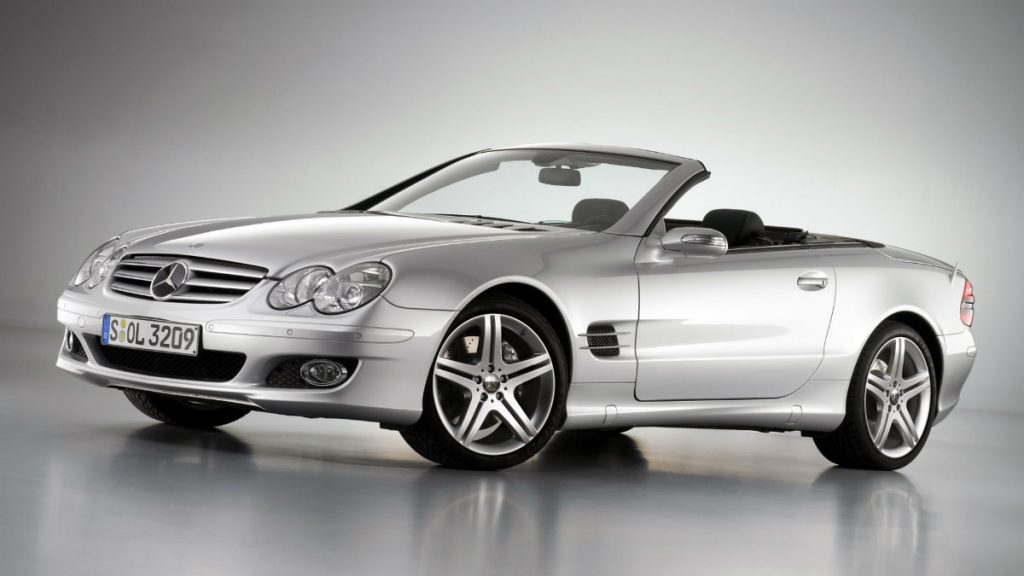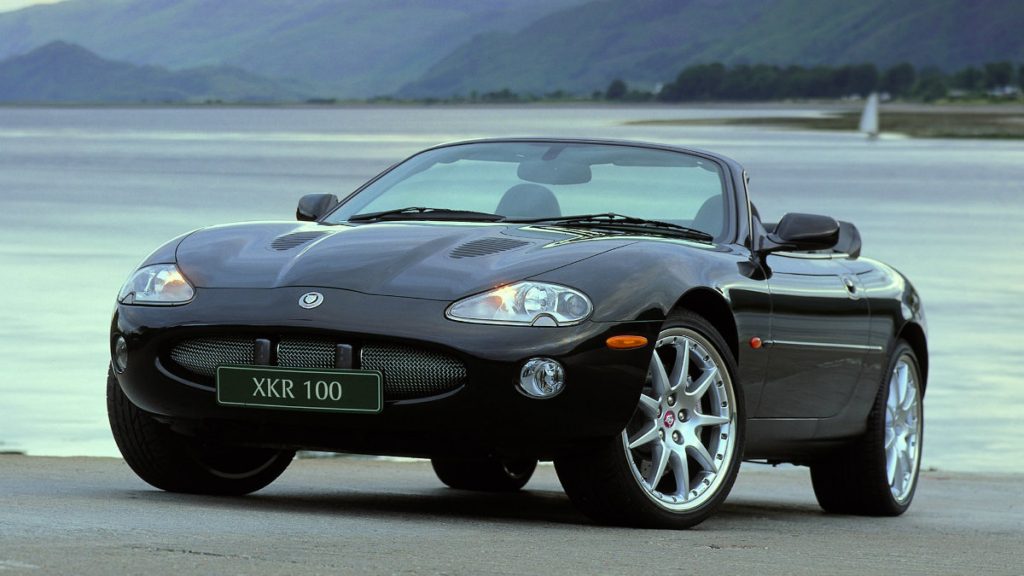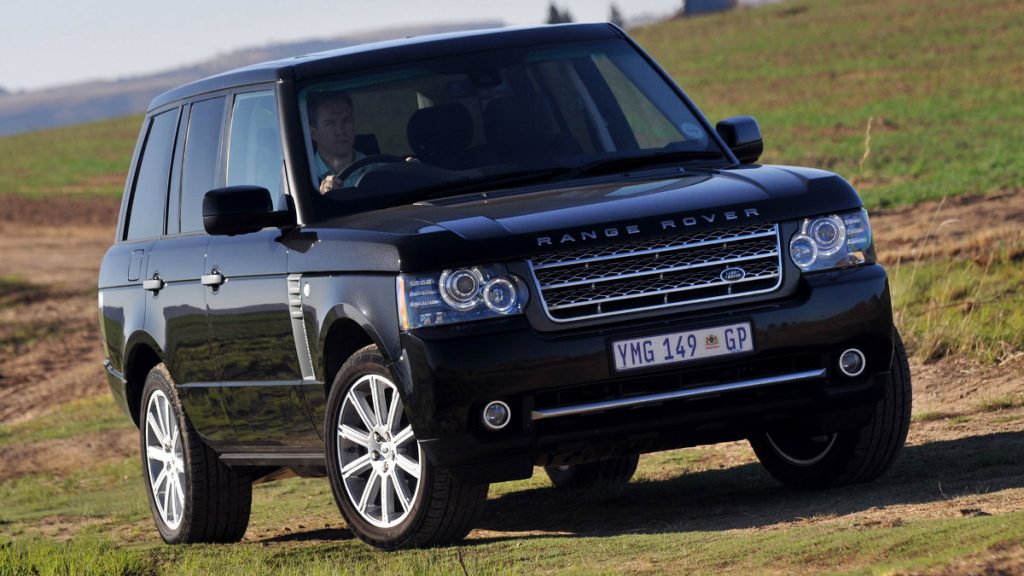Here is a list of affordable cars that will make you look like a millionaire for cheap.
With these premium models that are cheaper than you might have thought, you can impress everybody without breaking the bank. Owning a flashy expensive car is a sure sign that you are successful and rich. For decades, success has been measured by the car you own. Most people don’t feel complete until they buy an over-the-top car and proudly drive it. If you’re not wealthy yet, do worry, the following gems will surely make you look like you are. Everyone wishes they were rich, even if they don’t want to admit it. It might not be everyone’s main goal, but financial freedom is always sought after. Not everyone can have enormous wealth, but sometimes, though, just looking rich is enough. Some of the premium brands are sometimes not actually that expensive at all. So, if you desperately need an expensive-looking set of wheels, but can’t afford the real thing? You should buy one of the cars on the list below. They are previously expensive luxury models that, with the help of depreciation, managed to come down to reasonable price levels. These cars are obtainable to a much wider audience. You will be amazed at how many cool and prestigious cars you can buy for the price of an ordinary mid-size family sedan or even a used compact car. So, keep reading to learn about affordable cars that will make you look and feel rich.
Mercedes-Benz SL 2001 – 2006
The Mercedes-Benz SL-Class R 230 was presented to the press in July 2001. A unique combination of state-of-the-art electronic chassis systems guaranteed an exceptional driving experience and outstanding driving safety. It set tones in sports cars and automotive engineering. At the time of its introduction, the SL 500 was available with an output of 225 kW (306 hp). In the autumn of 2001, the SL 55 AMG with a supercharged V8 and an output of 350 kW (476 hp) was added to the range. In 2002, the SL 350 followed with a 180 kW (245 hp) 3.7-liter V6 engine, and in January 2003 Mercedes-Benz introduced the SL 600 with a 368 kW (500 hp) 5.5-litre V12 twin-turbo engine as the new flagship model. The SL’s extensive range of standard equipment included integral leather seats with a memory function for the electrically adjustable seats and steering wheel, which were also stored on the electronic ignition key, a multi-function steering wheel, automatic air conditioning and stereo car radio. Innovative driver assistance systems such as the adaptive cruise control DISTRONIC, the automatic emergency call system TELEAID, the control and display system COMAND and the electronic tire pressure monitor were optionally available. Leather, exotic wood and aluminum gave the passenger compartment the exclusive and stunning look typical of the SL. Interior furnishings were available in two types of leather, four types of high-quality trims and five colors. The four individual instruments were framed in the SL’s classic chronometer cockpit by shiny matt chrome, which was also used to embellish other details in the passenger compartment. The distinctive details of the R 230 series combined traditional and future design elements. For example, the air inlets in the front wings were a typical feature of the SL 300 in the 1950s. The narrow, wing-like profiles on the side air inlets – referred to by professionals as ‘fins’- are reminiscent of the past. The designers used this stylistic element to give the grilles in the bonnet an extra sporty tone. Today you can get one for 6000USD in US or 7000EUR in Europe.




Jaguar XJR 2004–2006
The Jaguar XJ (X308) is a full-size luxury sedan manufactured and marketed by Jaguar between 1997-2003 across two generations and featuring Jaguar’s AJ-V8 and Jaguar’s independent rear suspension. It was the third and final evolution of the XJ40 platform which had been in production since 1986. The XJR is powered by the supercharged version of the 4.0 L V8. It is also equipped with sport suspension, wider wheels and tires, and matte-black exterior window trim (except in the US market, where the XJR was given chrome window frames and rain gutters.) Like the Sport model, the XJR has a body-colored radiator grille surround, but with a stainless-steel mesh insert rather than the normal vanes. Other exterior touches include the “XJR” rear badging and larger exhaust outlets. Available on late XJR models was an “R1” performance option. This included 18″ BBS wheels, larger Brembo brakes with cross-drilled rotors, and re-tuned suspension. The XJR was capable of reaching 60 mph (97 km/h) from a standstill in 5.6 seconds, with an electronically limited top speed of 155 mph (249 km/h). In 2001, to commemorate the 100th anniversary of Sir William Lyons’ birth, Jaguar produced five hundred examples of a special-edition model named the “XJR 100”. Only available in the Anthracite exterior color with charcoal leather upholstery, the interior is trimmed with contrasting red stitching and birdseye maple. It is fitted with a leather-covered sports steering wheel and Momo shift knob. The XJR 100 uses the Brembo brakes otherwise found on the R1-equipped XJR, plus 19″ “Montreal”-style wheels manufactured by BBS. Today you can get one for 8000USD in US or 10000EUR in Europe.




Porsche Boxster 2005–2012
The Porsche Boxster is a mid-engined two-seater roadster. It was Porsche’s first road vehicle to be originally designed as a roadster since the 550 Spyder. The first-generation Boxster (the 986) was introduced in late 1996, it was powered by a 2.5-liter flat six-cylinder engine. The design was heavily influenced by the 1992 Boxster Concept. In 2000, the base model was upgraded to a 2.7-liter engine and the new Boxster S variant was introduced with a 3.2-liter engine. In 2003, styling and engine output were upgraded on both variants. Production of the 986 began at the former Porsche 928 facility in Stuttgart, Germany in 1996. Valmet Automotive also manufactured Boxsters under contract to Porsche at a facility in Uusikaupunki, Finland. The Boxster was Porsche’s biggest volume seller from its introduction in 1996 until the company introduced the Cayenne sport utility vehicle in 2003. As of September 2012, additional production of the 981 started at the former Karmann-factory in Osnabrück. In 2005, Porsche debuted the second generation of Boxster, the type 987, with a more powerful engine and styling inspired by the Carrera GT. Engine output increased in 2007 when both Boxster models received the engines from their corresponding Porsche Cayman variants. In 2009, the Boxster models received several new cosmetic and mechanical upgrades, further increasing engine output and performance. Today you can get one for 7000USD in US or 10000EUR in Europe.




Jaguar XK 1996–2006
The Jaguar XK is a two-door 2+2 grand tourer manufactured by Jaguar Cars from 1996–2014 in coupé and convertibcoupédy styles, across two generations. The XK was introduced at the Geneva Motor Show in March 1996 and was discontinued in July 2014. The first generation was marketed as the XK8, replacing the XJS and was Jaguar’s first 8-cylinder model since the Daimler 250, introducing the all-new Jaguar AJ-V8 engine. The XK8 shared its platform with the Aston Martin DB7 which was itself based on the stillborn XJ41/42 project built on a modified XJ-S chassis conceived in the mid-1980s. The second generation of the XK, noted for its aluminum monocoque chassis and construction, was launched in 2006 for the 2007 model year. The XKR performance variant was introduced in both of the generations with the second generation of the model also boasting a more powerful XKR-S variant. Today you can get one for 4000USD in US or 5000EUR in Europe.




Range Rover 2002–2012
In 2002, the new-generation model was introduced, which saw the model move further up-market. Planned and developed under BMW ownership the third generation was to share components and systems (electronics, core power units, etc.) with the BMW 7 Series (E38). It was designed to accommodate BMW’s 4.4-liter M62 V8 engines for future models. The manual transmission was dropped entirely, leaving only the automatic. The 7 Series electronics system was being phased out during the development of the third-generation Range Rover and being replaced with the electronics from the BMW 5 Series (E39). Note that there were three “Generations” of the L322, from 2002 until 2005 was the aforementioned M62 BMW V8 with ZF 5HP-24 transmission, going along to 2006 until 2009 a 4.4-liter Jaguar derived engine alongside a 4.2-liter supercharged variant of the Jaguar engine partnered with the ZF 6HP-26 transmission. In 2010 Land Rover fitted the newly designed AJ133 5.0 N/A and Supercharged engine with ZF 6HP-26 until the 2012 model year, which saw the end of the L322 production. This list does not give diesel options. From 2002-2004 the L322 saw a standard BMW E39 electrics system. From 2005-2009 the L322 saw an updated Jaguar derived electrics system with fiber optics and Bluetooth. From 2010-2012 the L322 saw an updated (different from 05-09) Jaguar derived electrics, the first “modern feeling” system. In MY06 the first exterior update was applied with a slight face-lift of the front fascia, tail lamps. Some other slight differences can be found in the “Supercharged” variant. The second exterior update was in 2010, bringing a true modern feel to the L322 with a new fascia, tail lamps, side grills, and clear side markers. The interiors stayed relatively the same with exclusions i.e. Supercharged trim black piano finish until 2006.5, (NAS 2007) where an updated interior was released. Today you can get one for 5000USD in US or 3000EUR in Europe.




Maserati Ghibli 2013 on
The Maserati Ghibli (M157) is an executive car produced since 2013. The Ghibli was introduced at the 2013 Shanghai Auto Show and marked Maserati’s entry into the mid-size executive car market as being positioned below the Quattroporte. The Ghibli is the first car to be underpinned by the Maserati M156 platform and was the company’s best-seller until the Levante crossover SUV was launched. The company sold 6,000 units of the car in its first year into the market, which alone exceeded the best sales figures for Maserati for 2008, which was 9,000 cars sold in a total of different models. The number increased to 22,500 in 2013 and 36,448 in 2014. It continued to increase in 2015 due to the delay in the Levante’s launch. The Ghibli also marks the return of the name in the US market as the Biturbo based Ghibli (AM336) was not available for sale there. The diesel engine in the Ghibli was developed under Ferrari’s engine specialist Paulo Martinelli which is based on the same V6 diesel unit found in the Jeep Grand Cherokee. The engine is exclusive to the European market only. A ZF 8HP transmission powers the rear wheels as used by all the major competition except Mercedes-Benz. The Ghibli, which is based on a shorter wheelbase than the flagship Quattroporte, uses a steel monocoque chassis with additional subframes with the front subframe made of aluminum. Tested weight distribution for the diesel version stands at 51/46 front/rear. Both the Ghibli and the Quattroporte share the same suspension although the Skyhook suspension is optional on the former. From the 2018 model year, the Ghibli comes in two trims, namely GranSport and GranLusso, all of which relate to the interior of the car with the GranSport trim featuring an aggressive front bumper. The interior of the car shares some parts with other Chrysler vehicles. The Uconnect infotainment system is from the Dodge Charger, the window switches come from the Jeep Grand Cherokee and the light switches and the steering column stock are shared with the discontinued Chrysler Town & Country. Buyers have different leather upholstery for the interior to choose from. A faux-suede headliner, a premium Bowers, and Wilkins sound system and wood interior inserts and steering wheel are available as an option.[7] Safety features and amenities include adaptive cruise control, adaptive LED headlights supplied by Magnetti Marelli, lane keep assist, steering assist and brake force assist. The car received a five-star crash test rating from NCAP due to these features. Today you can get one for 18000USD in US or 25000EUR in Europe.




Maserati GranTurismo 2007-2017
The Maserati GranTurismo and GranCabrio (M145) are a series of grand tourers produced by Maserati from 2007 to 2019. They succeeded the 2-door V8 grand tourers offered by the company, the Maserati Coupé, and Spyder. The model was initially equipped with a 4.2-liter V8 engine developed in conjunction with Ferrari. The engine generates a maximum power output of 405 PS (298 kW, 399 hp) and is equipped with a 6-speed ZF automatic transmission. The GranTurismo platform was derived from the Maserati M139 platform of Maserati Quattroporte V, with double-wishbone front and rear suspension. The grand tourer emphasizes comfort in harmony with speed and driver-enjoyment. A total of 28,805 GranTurismos and 11,715 units of the convertible were produced. The final production example of the GranTurismo, called Zéda, was presented painted in a gradient of blue, black and white colors. Unveiled at the 2007 Geneva Motor Show, the GranTurismo has a drag coefficient of 0.33.The model was initially equipped with a 4.2-liter (4,244 cc (259.0 cu in)) V8 engine developed in conjunction with Ferrari. The engine generates a maximum power output of 405 PS (298 kW, 399 hp) and is equipped with a 6-speed ZF automatic transmission. The 2+2 body has been derived from the Maserati M139 platform, also shared with the Maserati Quattroporte V, with double-wishbone front suspension and a multilink rear suspension. The grand tourer emphasizes comfort in harmony with speed and driver-enjoyment. Today you can get one for 25000USD in US or 25000EUR in Europe.




Bentley Continental GT 2003–2011
The Bentley Continental GT is a grand tourer manufactured since 2003. It was the first car released by Bentley under Volkswagen AG management, after the company’s acquisition in 1998, and the first Bentley to employ mass production manufacturing techniques. In 1994, Rolls-Royce Motors (who at that time owned the Bentley brand) previewed a convertible concept car at the Geneva Motor Show – the Concept Java. The car was designed to be a highly desirable Bentley, but smaller, more affordable, yet still exclusive in order to maintain the integrity of the brand. It was to appeal to a new range of potential buyers and generate increase sales volume for Rolls Royce (at the time the current Bentley Continental R was an ultra-exclusive £180,000 in the UK, within reach of a very select market, selling only 2-300 units a year). The Concept Java never made it into production in the form seen in 1994 (although 13 cars were made for the Sultan of Brunei). However, the Bentley Continental GT realized the concept of the Java as a more affordable Bentley, manufactured in much larger volumes. Whilst external styling is different, the dashboard design was clearly influenced by Java. Today you can get one for 26000USD in US or 25000EUR in Europe.




Aston Martin Vantage 2006-2015
Following the unveiling of the AMV8 Vantage concept car in 2003 at the North American International Auto Show designed by Henrik Fisker, the production version, known as the V8 Vantage was introduced at the Geneva Motor Show in 2005 for the 2006 model year. The two-seat, two-door coupé had a bonded aluminum structure for strength and lightness. The 172.5 inches (4.38 m) long car featured a hatchback-style tailgate for practicality, with a large luggage shelf behind the seats. In addition to the coupé, a convertible, known as the V8 Vantage Roadster, was introduced later in that year. The V8 Vantage was initially powered by a 4.3 L (4,280 cc) quad-cam 32-valve V8 which produced 380 bhp (283 kW, 385 PS) at 7,300 rpm and 409 N⋅m (302 lb-ft) at 5,000 rpm. However, models produced after 2008 had a 4.7-liter V8 with 420 bhp (313 kW, 426 PS) and 470 N⋅m (347 lb-ft) of torque. Though based loosely on Jaguar’s AJ-V8 engine architecture, this engine was unique to Aston Martin and featured race-style dry-sump lubrication, which enabled it to be mounted low in the chassis for an improved center of gravity. The cylinder block and heads, crankshaft, connecting rods, pistons, camshafts, inlet and exhaust manifolds, lubrication system and engine management were all designed in house by Aston Martin and the engine was assembled by hand at the AM facility in Cologne, Germany, which also built the V12 engine for the DB9 and Vanquish. The engine was front mid-mounted with a rear-mounted transaxle, giving a 49/51 front/rear weight distribution. Slotted Brembo brakes were also standard. The original V8 Vantage could accelerate from 0 to 60 mph (97 km/h) in 4.8 seconds before topping out at 175 mph (282 km/h). In 2008, Aston Martin introduced an aftermarket dealer approved upgrade package for power and handling of the 4.3-liter variants that maintained the warranty with the company. The power upgrade was called the V8 Vantage Power Upgrade, creating a more potent version of the Aston Martin 4.3-litre V8 engine with an increase in Peak power of 20 bhp to 400 bhp (298 kW, 406 PS) while peak torque increased by 10 Nm to 420 Nm (310 lb-ft). This consists of the fitting of the following revised components; manifold assembly (painted Crackle Black), valved air box, right and left-hand side vacuum hose assemblies, engine bay fuse box link lead (ECU to fuse box), throttle body to manifold gasket, intake manifold gasket, fuel injector to manifold seal and a manifold badge. Today you can get one for 30000USD in US or 40000EUR in Europe.





